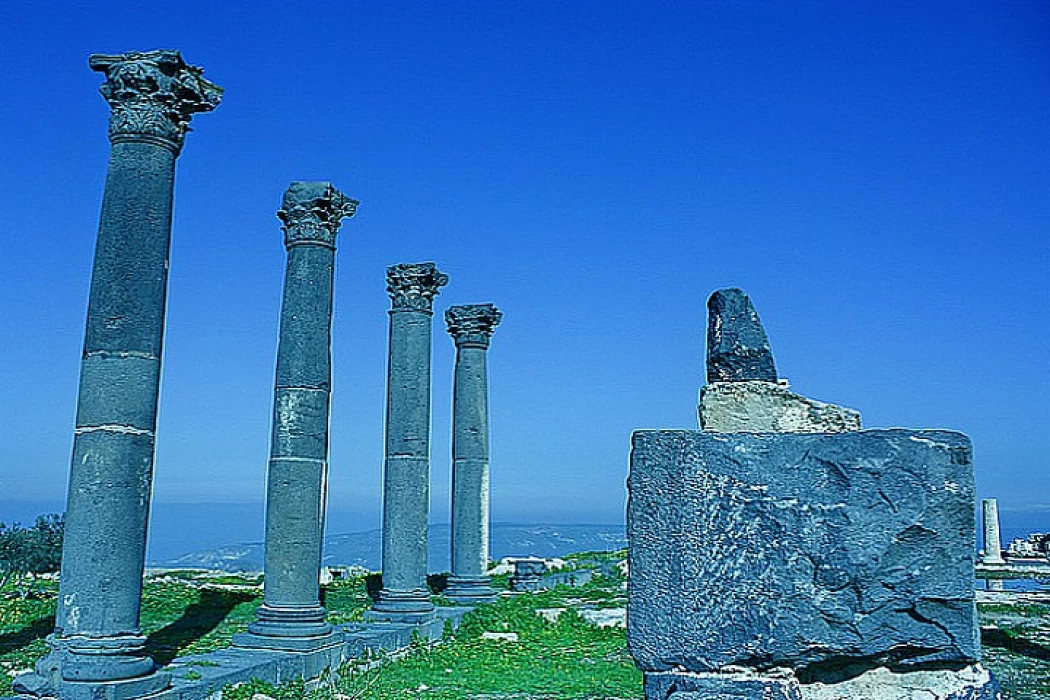
Jordan - Umm Qais
Details About Umm Qais
Umm Qais is located on the northern side of Irbid, overlooking several wonderful places such as the Jordan Valley, Lake Tiberias, and the Yarmouk Valley, as well as the Golan Heights on the opposite side of the city. Umm Qais is famous for its buildings, streets, theaters, and baths, which were carved using black basalt stone. Umm Qais is characterized by its multiple souks, gates, churches, stunning shrines, and a tunnel that epitomizes the brilliance of irrigation engineering.
The Roman bath complex in Umm Qais dates back to the fourth century A.D. It is located 100 meters from the intersection of tiled streets on the eastern side of the city on a dirt road. The baths have underground sections that can be accessed by walking along the dirt road that faces the western theater. They contain traditional Roman baths with changing rooms and water of different temperatures, including cold, hot and warm water.
The Umm Qais Archaeology Museum is located inside the Rusan House, above the Acropolis of Umm Qais, and its construction dates back to the end of the Ottoman period, i.e. the end of the nineteenth century AD. It was adopted by the Department of Public Antiquities and cooperated with the German Protestant Institute in 1990 AD, and then the ground floor of it was used as a museum consisting of two parts; the first is an internal courtyard and the second is several rooms, and currently the Department of Public Antiquities is carrying out maintenance and restoration work for the upper floor of it, and the maintenance work will include the ground floor and the courtyard as well.














